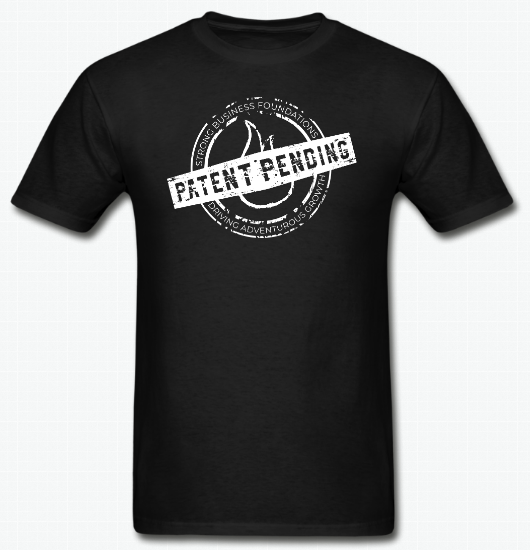What To Consider Before You Launch
When assessing the patentability of an idea, there are 3 important concepts you need to understand:
- Absolute novelty
- Destroying your own novelty
- The difference between a provisional and a complete patent
What is the purpose of a patent? A patent protects the idea behind your product. It provides you with a 20-year monopoly where someone else cannot manufacture or sell a product if their product has the same underlying idea as yours.
Want more information on Patent Registration?
Ready to protect your idea?
Patentability Requirements in South Africa
In South Africa, the patentability requirements are absolute novelty, inventiveness, and the product must be mass-producible.
There is, however, one very fundamental concept to understand. You cannot protect a mere idea. You have to protect the device that enables something or the method that achieves a specific result.
For example, you cannot protect the idea of going to the moon. You have to protect the rocket that gets you there. The idea is going to the moon. The rocket is the device enabling it. Therefore, patent the rocket!
1. Absolute Novelty
The absolute novelty test is very easily misunderstood. Absolute novelty means if your idea is disclosed or sold anywhere in the world, your novelty is destroyed.
So to obtain a valid patent for an invention in South Africa, it’s not enough that it’s new only in South Africa. It must be new worldwide.
As an example, imagine that there is a product being sold in Europe and you wanted to patent it in South Africa. The fact that it’s being sold in Europe, whether there’s a registered patent in Europe or not, discloses the novelty. In other words, the novelty is destroyed and you cannot obtain a valid patent in South Africa.
2. Destroying Your Own Novelty
You can also destroy your own novelty. If you start marketing or selling something to the public before you file patent protection, you will destroy your own novelty. This is a very unfortunate mistake.
Partial Novelty and Inventiveness
Some say that there’s nothing truly new under the sun. This leads to the question: “Are still ideas out there that can be patented?”
IP Braai receives new ideas every day from entrepreneurs in South Africa. But inventiveness doesn’t mean the whole idea or invention has to be new. If you bring a new aspect to an existing product, it could still be patentable.
Example: Fire Stones invention
Let’s discuss the Fire Stones invention as an example of this. Originally, there was only a firestone, a porous piece of stone. This was inserted into paraffin, soaked, and then lighted. That idea was patentable in the beginning.
But that idea’s been around for a while. Now, however, the inventor of Fire Stones has taken it to the next level. He’s introduced a spade to the firestone, and the combination of these two that you store in the container with paraffin.
The spade is really useful to easily remove the stone from the fire once you have it going nicely. The Fire Stone fits snugly inside the spade to enable burning from only one side, and this increases burning time (20 minutes plus…).
Therefore, if you make a new or inventive improvement to an existing product or system, that could be patentable. The secret is the combination. In the Fire Stones instance, this is the fact that you have the stone and the spade. That combination gives you novelty and inventiveness.
The misperception, however, is that you have protection for the stone on its own. This is not the case. Therefore, this patent actually provides you with a narrower protection.
This is why it is so important to speak to a patent attorney. They can correctly explain to you what the actual width, or ambit, of your protection is. Sometimes a patent’s novelty makes the protection so narrow that it’s almost not even worth the money to file a patent.
3. Provisional vs Complete Patent
You may need to disclose your idea to a developer or a manufacturer to finalise your product. Or you may want to test the market first before you invest too much into your venture. This is where a provisional patent comes into play.
A complete patent provides you with a 20-year monopoly, whereas the function of a provisional patent is to reserve your rights for the first 12 months and forms the basis of a complete patent. You can use these 12 months to test the market and finalise your product without worrying that you are destroying your own novelty, or that someone else is going to run away with your idea.
However, you need to remember to file a complete patent application within the first 12 months. This is extremely important. Many people forget to file the complete patent application and then the provisional patent lapses and they don’t even realise it. So remember to file a complete patent application within 12 months of filing the provisional patent application.
In certain instances, if your product is final and you don’t need the 12-month provisional patent, a complete patent can be filed in the first instance. This will save you the cost of filing a provisional patent.
Conclusion
When considering patent registration, remember the absolute novelty test, not to destroy your own novelty, and to decide whether you need a provisional patent or not. If you file a provisional patent, don’t forget to file a complete patent application within the first 12 months.






Pingback: Registered Designs: How to Protect Your Product From Copycats - IP Braai
Pingback: Service Level Agreement Template South Africa: 7 Part Quick Guide | IP Braai